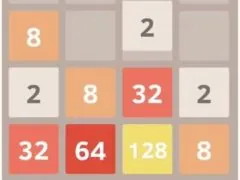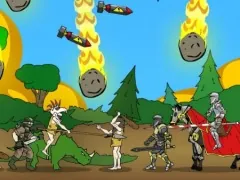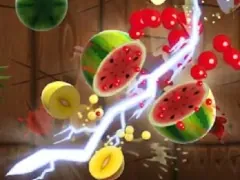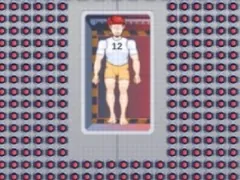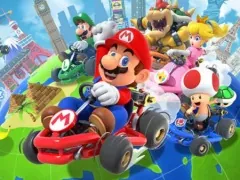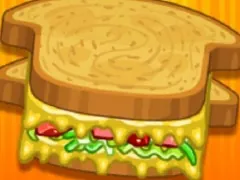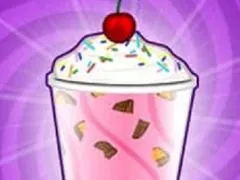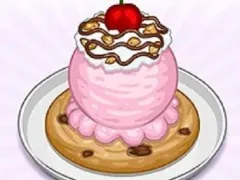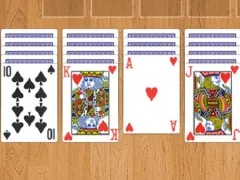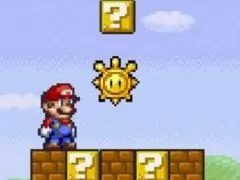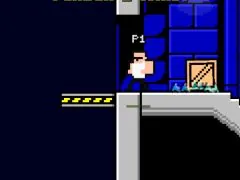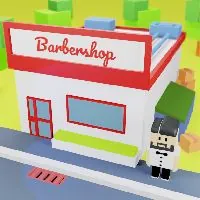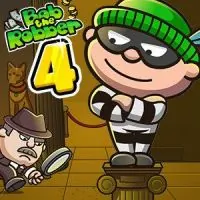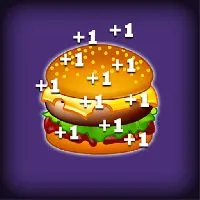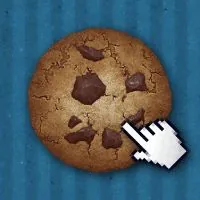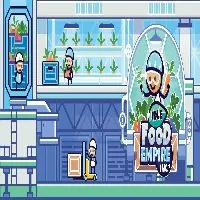PAPA’S PIZZERIA
SIMILAR GAMES
Game Description
Papa’s Pizzeria - HaHa Games
About Papa’s Pizzeria - HaHa Games
Welcome to the thrilling and fast-paced world of Papa’s Pizzeria, a captivating online game designed to test your culinary skills and customer service prowess. Here at Games Haha, we present an experience where the aroma of freshly baked pizza fills the air, and every tick of the clock brings new challenges and opportunities. In this engaging simulation, players step into the shoes of a dedicated employee at the renowned Papa Louie’s pizza establishment. When Papa Louie himself must depart unexpectedly, the entire responsibility of managing the busy pizzeria falls squarely on your shoulders. From the moment you don your apron, you are immersed in a vibrant environment where mastering the art of pizza preparation and ensuring customer satisfaction are paramount to success.
The core gameplay revolves around fulfilling a constant stream of customer orders. Each order is unique, reflecting the diverse tastes and preferences of a discerning clientele. Your journey begins in the Topping Station, where you meticulously prepare each pizza according to specific instructions. This involves not just selecting the right ingredients but also applying them with precision. Customers will specify their desired amount of sauce, the type and quantity of cheese, and an intricate arrangement of various toppings. Some may request a simple pepperoni, while others might have a complex combination of vegetables, meats, and even unconventional additions. The accuracy with which you replicate these custom orders directly impacts your performance and the overall reputation of the pizzeria.
Beyond the initial preparation, the game progresses to the Baking Station. Here, timing is everything. You must carefully monitor the baking process, ensuring each pizza is cooked to golden-brown perfection without becoming overcooked or undercooked. Achieving the ideal bake is crucial, as it contributes significantly to the customer’s satisfaction rating. A perfectly baked pizza not only delights the customer but also earns you higher tips and a better score, propelling you forward in your pizza-making career.
As you gain experience and successfully manage more orders, the pizzeria grows, and so do the complexities of your role. New ingredients become available, customer patience levels might decrease with complex orders, and the sheer volume of incoming requests can become overwhelming. This escalating challenge creates a dynamic and addictive gameplay loop, keeping players engaged as they strive to become the ultimate pizza maestro. Papa’s Pizzeria on Games Haha is more than just a game; it’s a comprehensive test of your ability to multitask, manage your time efficiently, and deliver high-quality products under pressure. Prepare to stretch, top, bake, and slice your way to victory in this exciting culinary adventure.
The Thrill of Papa’s Pizzeria: A Deeper Dive into Gameplay Mechanics
Embarking on the adventure of Papa’s Pizzeria means embracing a role that demands more than just basic cooking skills. It’s a meticulously crafted experience that simulates the day-to-day operations of a thriving pizza shop. We, as players, are immediately thrust into a dynamic environment where efficiency and precision are not merely encouraged but are essential for survival and growth. The initial setup of the game introduces us to the fundamental mechanics that will define our success. Papa Louie’s sudden departure leaves a void, and it is our immediate task to fill it, ensuring that the legacy of delicious pizzas continues uninterrupted.
The gameplay is segmented into distinct stations, each representing a critical phase in the pizza-making process. The first is the Order Station. Here, we interact directly with the incoming customers. Each customer approaches the counter with a specific order, often communicated verbally or via a detailed ticket. These tickets are our blueprints, outlining every single preference. It is vital to listen attentively and read carefully, noting the type of crust requested, the specific spread of sauce, the exact quantity and type of cheese, and the precise placement and selection of toppings. Missing even a minor detail can lead to a less-than-satisfied customer, impacting our earnings and overall score.
Following the successful recording of an order, we proceed to the Build Station. This is where the magic truly begins. Our first task is to prepare the dough. Customers may request different sizes or even specific shapes, requiring us to accurately stretch and shape the dough to match their specifications. Once the foundation is laid, the saucing phase commences. Different pizzas call for different sauces, and the amount applied must be precisely controlled. Too much sauce can make the pizza soggy, while too little can leave it bland. The subsequent stage involves adding cheese. Again, the type and amount are critical. Some customers prefer a generous coating, while others opt for a lighter touch. This stage requires a steady hand and a keen eye for detail, ensuring the cheese is distributed evenly across the pizza base.
The most intricate part of the Build Station is the topping application. This is where the customization truly shines. With a wide array of ingredients at our disposal – from classic pepperoni and mushrooms to more exotic options like anchovies and olives – we must arrange them exactly as the customer has specified. Some orders might require toppings to be grouped in specific sections, while others demand a uniform scattering. The visual appeal of the pizza, dictated by the topping arrangement, plays a significant role in customer perception and satisfaction. We must learn to anticipate potential issues, such as toppings that might slide off during baking, and adjust our placement accordingly. This detailed attention to the arrangement of each ingredient is a hallmark of a truly skilled pizza chef.
Once the pizza has been meticulously assembled, it moves to the Cook Station. This phase is governed by the principles of thermodynamics and precise timing. The oven is our primary tool, and its temperature must be managed effectively. Each pizza requires a specific baking duration and temperature to achieve the perfect crispness and melt. We must learn to identify the visual cues that indicate a pizza is nearing perfection – the bubbling cheese, the golden-brown crust, the slightly charred edges. Overbaking results in a dry, burnt pizza, leading to unhappy customers and lost profits. Underbaking leaves the crust doughy and the toppings unappetizing. The accuracy of our timing here is directly linked to the quality of the final product. We might even have to manage multiple pizzas in the oven simultaneously, requiring advanced multitasking skills to ensure each one receives the appropriate attention.
The final stage is the Cut and Serve Station. After the pizza emerges perfectly baked from the oven, it’s time to slice it. Customers often specify the number of slices they desire, and the cuts must be clean and consistent. A neatly sliced pizza looks more appealing and is easier for the customer to handle. Finally, the pizza is boxed and presented to the waiting customer. This is the moment of truth, where we present our culinary creation and await their judgment. The speed and accuracy with which we complete this entire process, from order taking to serving, directly influences our tip amount and our overall customer satisfaction score. Higher scores lead to increased revenue, allowing us to upgrade our equipment, unlock new ingredients, and tackle increasingly challenging days at Papa’s Pizzeria.
Mastering the Art of Pizza Perfection: Strategy and Progression
Success in Papa’s Pizzeria is not solely about speed; it is about strategic execution and a gradual mastery of its intricate systems. As we progress through the days and weeks, the game introduces new layers of complexity, demanding that we adapt and refine our approach. Initially, the orders may be simple, allowing us to get a feel for the basic mechanics of stretching dough, applying sauce, and adding a few toppings. However, the game quickly ramps up, presenting customers with increasingly elaborate requests and shorter patience timers. This necessitates the development of efficient workflows and a keen understanding of how to prioritize tasks.
One of the key strategies for excelling is to develop a rhythm at each station. In the Order Station, becoming adept at quickly deciphering customer tickets and anticipating their needs can save valuable seconds. Memorizing common topping combinations or understanding customer archetypes can further streamline this process. For instance, some customers might always order a specific set of toppings, allowing us to mentally prepare the ingredients even before the order is fully confirmed.
At the Build Station, efficiency comes from organization and practice. We need to develop muscle memory for stretching dough to the correct size and shape. Strategically arranging toppings within easy reach and knowing the precise order in which to apply them can shave off critical time. It’s also important to understand how different toppings interact during baking – some might require placement closer to the crust to ensure they cook properly, while others might need to be added later in the baking process to prevent burning. Learning to manage multiple pizzas simultaneously, perhaps by starting the dough for one while saucing another, is a vital skill that distinguishes novice players from seasoned professionals.
The Cook Station demands a meticulous approach to timing. Investing time in learning the visual cues of a perfectly baked pizza is essential. Developing a mental timer or utilizing any in-game prompts that indicate readiness can prevent costly errors. Managing multiple pizzas in the oven requires careful attention to their individual cooking times. It might be beneficial to place pizzas that require longer baking times in the oven first, while shorter ones can be added later. This proactive management ensures that all pizzas are ready around the same time, minimizing customer wait times.
The Cut and Serve Station also benefits from practiced technique. Learning to make clean, precise cuts quickly can enhance the customer's perception of quality. Efficient boxing and delivering the pizza promptly completes the cycle. The faster and more accurately we can perform these actions, the higher our tip earnings will be, providing us with the financial resources to improve our operations.
Progression in Papa’s Pizzeria is marked by several key milestones. As we successfully complete days, we earn money which can be reinvested in various upgrades. These upgrades can include faster ovens, improved pizza cutters, additional topping dispensers, or even enhanced sauces and dough preparation tools. Furthermore, the game introduces new ingredients and more complex customer orders as we advance, constantly challenging us to learn and adapt. Unlocking new sections of the pizzeria or new customer segments adds further depth and replayability. The ultimate goal is to achieve a perfect score for every order, mastering every aspect of pizza creation and customer service, thereby cementing our reputation as the finest pizza chef in town.
The Culinary Canvas: Exploring Ingredients and Customization
Papa’s Pizzeria transforms the simple act of making a pizza into an elaborate artistic endeavor, a true culinary canvas where each ingredient plays a vital role in the final masterpiece. The game offers a rich palette of flavors and textures, allowing for an unparalleled level of customization. From the foundational elements of dough and sauce to the diverse array of meats, vegetables, and cheeses, every choice contributes to the overall appeal and taste of the pizza. We are empowered to become true artists, translating customer desires into delicious reality.
The journey begins with the Dough Station. Here, we are not merely presented with a pre-made base. Instead, we engage in the tactile process of stretching and shaping the dough. Customers might specify a particular size – small, medium, or large – and sometimes even a preferred crust thickness. Achieving the perfect circular shape, ensuring an even thickness, and preparing it for the subsequent stages requires a deft touch. This initial step sets the stage for everything that follows; a poorly prepared base can negatively impact the entire pizza.
Next, we move to the crucial stage of saucing. Papa’s Pizzeria typically offers a selection of popular sauces, such as classic marinara, creamy alfredo, or even a spicy arrabbiata. The choice of sauce is often dictated by the customer’s preference and the intended flavor profile of the pizza. Equally important is the amount of sauce applied. A light coating might be preferred for pizzas with delicate toppings, while a more generous spread is suitable for heartier creations. We learn to distribute the sauce evenly, ensuring every bite is infused with flavor, creating a harmonious balance with the other ingredients.
The cheese layer is another critical component. The game provides a variety of cheeses, each with its unique melting properties and flavor. Mozzarella is a staple, offering that iconic stretchy texture, but players might also encounter options like sharp cheddar, provolone, or even parmesan. The quantity of cheese is a point of frequent specification from customers – some desire a light dusting, while others crave a thick, indulgent layer. Achieving an even distribution of cheese is key to ensuring a consistent melt and a visually appealing finish.
The heart of customization lies in the vast selection of Toppings. This is where the game truly shines in its detailed simulation of a real pizzeria. We have access to a wide spectrum of ingredients, catering to every imaginable taste:
- Meats: Classic pepperoni, savory sausage, crispy bacon, tender ham, spicy salami, and even ground beef are often available, allowing for a range of savory combinations.
- Vegetables: A vibrant array of vegetables awaits, including earthy mushrooms, sweet bell peppers (in various colors), pungent onions, tangy olives (black and green), juicy tomatoes, spicy jalapeños, and fresh spinach.
- Fruits: While sometimes controversial, pineapple is often a key option, alongside other potential additions like anchovies, which cater to more adventurous palates.
- Herbs and Spices: Beyond the main ingredients, players might find options for adding oregano, red pepper flakes, or basil to further enhance the flavor profile.
The arrangement of these toppings is not arbitrary. Customers often have very specific instructions regarding placement. Some may request toppings clustered in certain areas, while others might want them spread uniformly. For example, a customer might ask for pepperoni on one half of the pizza and mushrooms on the other, or perhaps a specific pattern of jalapeños across the entire surface. Mastering this precise placement is a testament to our attention to detail and our ability to follow instructions meticulously. The visual outcome of the topping arrangement significantly influences customer satisfaction, making this aspect of the game both challenging and rewarding.
Beyond the core ingredients, the game also introduces seasonal specials or limited-time toppings, adding an element of surprise and encouraging experimentation. As we progress, more exotic ingredients might become available, further expanding the creative possibilities. The ultimate goal is to combine these elements in such a way that they not only meet the customer’s explicit requests but also create a balanced and delicious flavor experience. Papa’s Pizzeria truly offers an unparalleled opportunity to explore the boundless creativity of pizza making, where every ingredient choice and every placement decision contributes to the final, edible work of art.
The Customer is Always Right: Service and Satisfaction in Papa’s Pizzeria
In the bustling and demanding environment of Papa’s Pizzeria, the unwavering principle that guides our operations is that the customer is always right. This philosophy is deeply ingrained in the gameplay mechanics, emphasizing that providing exceptional service is just as critical as crafting a delicious pizza. Our success is ultimately measured not just by the number of pizzas we make, but by the satisfaction levels of the patrons who grace our establishment. Every interaction, every order, and every finished pizza contributes to our reputation and our ultimate standing in the competitive world of pizza delivery.
The customer journey begins the moment they enter the pizzeria. At the Order Station, our primary role is to be attentive and efficient. Customers have a finite amount of patience, indicated by a visual meter that depletes over time. If we are too slow to take their order, or if we appear distracted or unsure, their satisfaction level will begin to drop. This necessitates a quick and accurate capture of their requirements, ensuring we note every detail of their desired pizza, from the crust and sauce to the precise selection and arrangement of toppings.
Once the order is taken, the pressure intensifies as we move through the preparation and cooking stages. While speed is important here, accuracy remains paramount. A pizza that is made quickly but incorrectly will inevitably lead to disappointment. The game meticulously tracks how well we adhere to the customer’s specifications. A mismatch in sauce type, an incorrect topping, or improper placement will result in a deduction from their satisfaction score. This attention to detail is what separates a mediocre pizza maker from a truly outstanding one.
The baking process also plays a crucial role in customer perception. A perfectly baked pizza not only tastes better but also looks more appealing. Overcooked or undercooked pizzas signal a lack of care and expertise, negatively impacting the customer’s overall experience. Therefore, mastering the timing at the Cook Station is essential for maximizing satisfaction. We must learn to recognize the visual cues of a perfectly cooked pizza and remove it from the oven at the optimal moment.
Finally, the presentation and delivery of the pizza are the culmination of our efforts. A neatly sliced pizza, presented in a well-sealed box, conveys professionalism. The speed at which we complete the entire order, from taking it to serving it, directly influences the tip we receive. Customers who are thoroughly satisfied with their entire experience – the speed of service, the accuracy of the order, and the quality of the pizza – are more likely to leave generous tips. These tips are vital for our progression, allowing us to upgrade equipment and unlock new ingredients, which in turn helps us serve customers even better in the future.
The game employs a star rating system to quantify customer satisfaction, typically ranging from one to five stars. Achieving a higher rating signifies that we have met or exceeded the customer’s expectations in all aspects of their order. These stars are not just for bragging rights; they directly translate into our daily earnings and our overall progression through the game. As we accumulate more stars and positive reviews, Papa’s Pizzeria’s reputation grows, attracting more customers and presenting us with increasingly complex challenges. Ultimately, mastering customer service in Papa’s Pizzeria means cultivating a deep understanding of their needs, executing every step with precision, and striving for perfection in every pizza we serve, ensuring that each customer leaves with a smile and a craving for more.
From Humble Beginnings to Pizza Tycoon: Growth and Achievements
The journey within Papa’s Pizzeria is a compelling narrative of growth, starting from a single, overwhelmed employee and evolving into a master of the pizza-making craft. The game brilliantly simulates the trajectory of a burgeoning business, where diligent effort and strategic decision-making lead to significant expansion and achievement. We are not merely playing a game; we are participating in the development of a culinary empire, one pizza at a time.
Our initial days at Papa Louie’s establishment are often characterized by a steep learning curve. The sheer volume of orders, the specific demands of each customer, and the distinct requirements of each station can feel overwhelming. However, with each successfully completed order, we gain valuable experience and unlock crucial knowledge. The game is designed to gradually introduce new mechanics, ingredients, and challenges, ensuring that players are constantly engaged and learning. This progressive difficulty curve is key to maintaining player interest and fostering a sense of accomplishment.
As we accumulate earnings from orders and tips, the opportunity for investment arises. This is where strategic planning becomes paramount. We can choose to reinvest our profits back into the pizzeria, enhancing its capabilities and efficiency. Common upgrades include:
- Oven Improvements: Faster baking times or the ability to cook multiple pizzas at a higher temperature.
- Dough Stretchers: Tools that assist in achieving perfect dough consistency and shape more quickly.
- Sauce Dispensers: Devices that ensure precise and even sauce application.
- Topping Stations: Expanded ingredient storage and quicker access to a wider variety of toppings.
- Ordering Kiosks: Allowing customers to place orders more independently, freeing up our time.
These upgrades are not merely cosmetic; they directly impact our ability to handle more complex orders and serve a greater number of customers without sacrificing quality or speed. Investing wisely in the right equipment allows us to overcome bottlenecks and improve our overall workflow, leading to higher customer satisfaction and increased profits.
Beyond equipment, progression is also marked by the unlocking of new ingredients and menu items. As we advance through the game's "days" or "weeks," Papa Louie might introduce exotic meats, rare vegetables, or special sauces, expanding the creative possibilities and catering to an even more diverse clientele. This constant influx of new options keeps the gameplay fresh and encourages experimentation. Furthermore, the game often features special events or holiday-themed challenges, where unique orders and bonuses are available, adding another layer of excitement and replayability.
The ultimate achievement in Papa’s Pizzeria is to reach a state of mastery, where we can consistently deliver perfect orders with speed and accuracy. This is often reflected in achieving the highest possible customer satisfaction ratings across all customers and earning the maximum amount of tips. The game may also include specific milestones or awards for accomplishments such as serving a certain number of customers, achieving a specific daily revenue, or mastering all available ingredients. Our goal is to transform Papa Louie’s humble pizzeria into the most renowned and successful pizza establishment, becoming a true pizza tycoon through dedication, skill, and a passion for culinary excellence.
Papa’s Pizzeria invites you into the bustling world of pizza making where precision and time management are the keys to culinary success. You take on the role of the sole employee at Papa Louie’s pizza shop after he unexpectedly leaves town. As orders come in, you are tasked with stretching dough, adding a variety of sauces and toppings, and baking them to perfection. Each customer has their unique preferences, from the amount of sauce and cheese to the specific toppings and their arrangement, making every pizza a custom order.
Craft Perfect Pizzas to Satisfy Your Customers
Managing the pizzeria requires keen attention to detail and efficient use of time. You must balance the demands of the order station, topping station, baking station, and cutting station. Customers evaluate your performance based on how well you replicate their desired pizza and how quickly they receive their order. Satisfactory service results in generous tips and points, which you can use to upgrade your shop’s equipment, enhancing your efficiency. Success in the game is measured by your ability to manage a flurry of orders and maintain high customer satisfaction amidst the growing complexity of requests.
